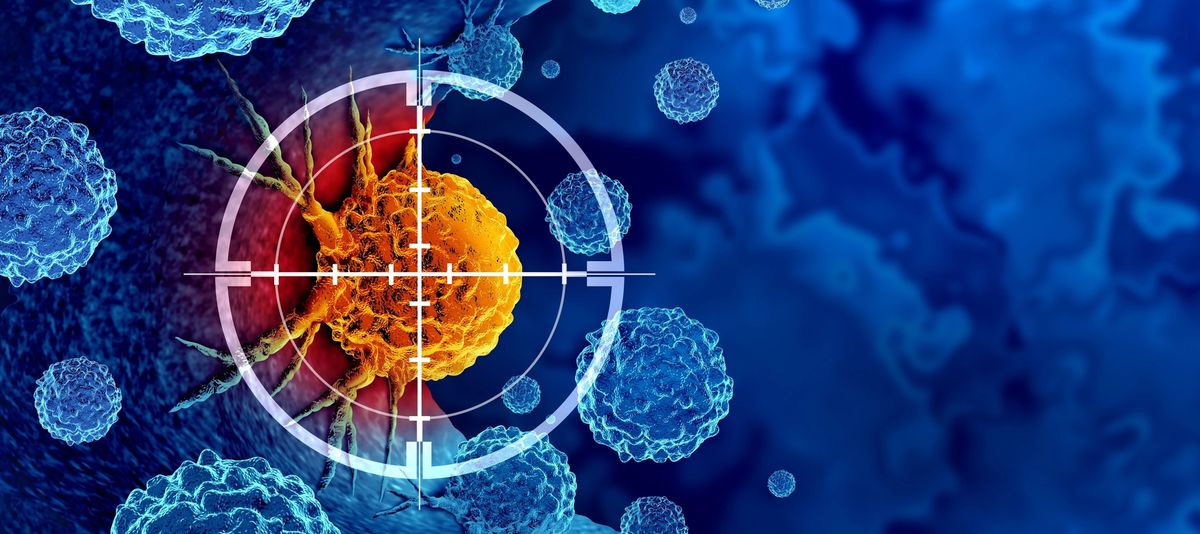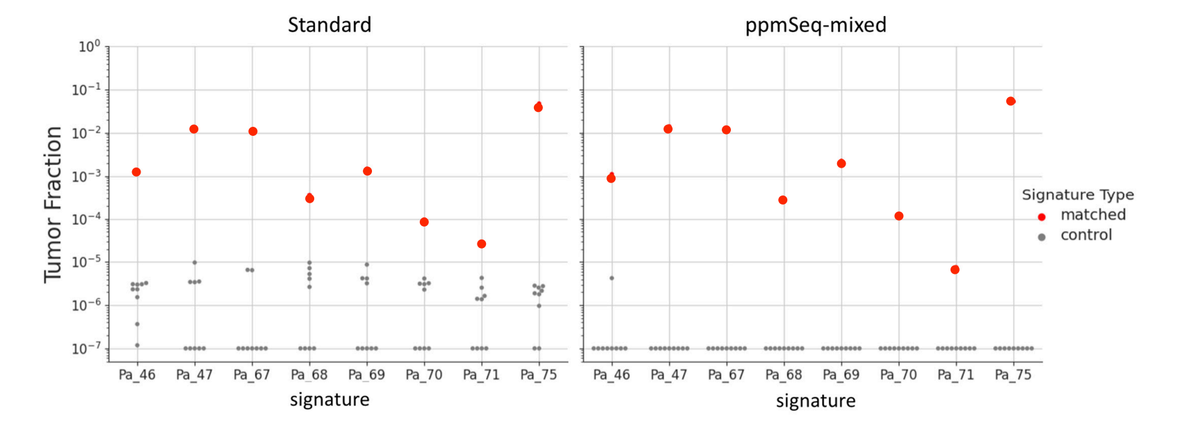

Better MRD detection with ppmSeq
Learn moreAchieve part-per-million SNV detection at low tumor fractions
- Enhance rare event detection by leveraging sequencing data from complementary DNA strands to identify and remove false-positive SNV calls generated from sample damage.
Generate high-quality data from low input DNA samples
- Maximize efficiency and sensitivity with the UG 100 Solaris™ workflow, enabling high-quality library prep and data generation. Obtain 30x coverage from 2ng of input from samples like cfDNA on the UG 100 Sequencing Platform.
Simplified library prep with Solaris Free workflow
- Use our PCR-free ppmSeq™ Adapters to capture and sequence both strands of the same DNA template without the need for additional UMIs or over-sequencing.
Extreme SNV accuracy
Flow chemistry inherently strong for SNVs
Ultima's unique single base flow chemistry was built for speed, efficiency, and accuracy where you need it most. Our chemistry inherently provides advantages for calling single nucleotide variants (SNVs) by asking how many nucleotides are added, but the base identity is never in question. Incorporating one type of nucleotide per flow enables an extremely low base substitution error rate.

Distinguish sample artifacts from legitimate mutations with ppmSeq™
ppmSeq™, or paired plus minus sequencing, is Ultima's ground-breaking method to achieve accuracy of one part-per-million or better for calling SNVs. ppmSeq combines the strong base calling performance of Ultima's flow chemistry with automated emulsion-based clonal amplification to sequence, identify and remove disagreement between both strands of a captured DNA molecule caused by sample error. Achieve extreme SNV quality without needing to over sequence.

SNVQ is the single nucleotide variant quality (SNVQ) score, which is different from a standard base quality score. The SNVQ score represents the error probability of the specific base substitution (e.g., A>G) rather than the aggregate error probability of any substitution (e.g., A>C/G/T).
ppmSeq™ for liquid biopsy and MRD
ppmSeq is game-changing for applications that require finding a needle in the haystack like liquid biopsy and MRD. The frequency of these rare events is not only lower than traditional sequencing error rates, but also lower than the error rate of common sample artifacts.
Explore MRD with ppmSeq
Estimated tumor fraction in matched and control cfDNA samples, for standard cfDNA prep (left) and ppmSeq-mixed (right). Each column corresponds to one patient SNV profile, with one matched cfDNA sample and 9 negative control samples. Included are reads that exceed the quality thresholds of SNVQ60 for Standard, and SNVQ70 for ppmSeq-mixed.
How it works
Retain information from both strands of a DNA fragment
Template denaturation of the DNA double strand only occurs within the emulsion droplet, after ligation of to the sequencing bead in the droplet before entering emulsion and compartmentalization. Sequencing beads contain copies of both top and bottom strands from the same template parent dsDNA fragment and are to be sequenced simultaneously.
Detect and remove sample error without over-sequencing
ppmSeq enables marking whether reads contain information from one or both strands of the DNA fragment. Assigning SNV quality scores based on both UG chemistry low sequencing error rate and strand information produces high percentage SNVQ60 data.


ppmSeq with the UG 100 Solaris™ Free workflow
The UG 100 Solaris™ Free workflow offers a PCR-free library prep solution compatible with most library prep kits, accommodating a range of sample types and input amounts.
Explore Solaris library prepView library compatibility guideWorkflow highlights
| ppmSeq with Genomic DNAcing | ppmSeq with cfDNA | |
|---|---|---|
| Adapter names | UG ppmSeq™ Adapters | UG ppmSeq™ Adapters |
| Purchase from | Ultima Genomics | Ultima Genomics |
| Sample indexing | 96 sample indices | 96 sample indices |
| DNA Type | Genomic DNA (gDNA) | Cell-free DNA (cfDNA) |
| DNA Input Range | 50 - 250 ng* | 1 - 20 ng* |
*DNA input amounts verified by Ultima Genomics.
How to access our technology
Start saving now.
Run your next project on the UG 100.

Certified Service Providers
Submit samples and start generating data on the UG 100 Sequencer. Access cost-effective and scalable sequencing with a growing network of global service providers rigorously vetted for their technical expertise and adherence to best practices.
Sequence with a CSP todayTechnology Access Program
Our Technology Access Program offers accessible entry to the UG 100™ through our in-house applications lab. Sequence on our high-capacity fleet of UG 100 Sequencers and receive support at every step, from consultation through data analysis.
Discover our TAP offeringsBring UG 100 into your lab
Interested in exploring how your lab can benefit from high-throughput, cost-effective sequencing? Learn how our novel use of open wafers and built-in automation is continuously driving the cost of sequencing down to accelerate omics at scale.
Explore our technology
